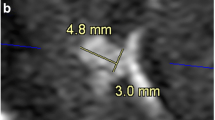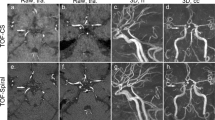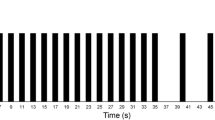Purpose: In a clinical study 35 patients with intracranial aneurysms were examined using CT-angiography, MR-angiography (MRA) and digital subtraction angiography (DSA). The aim of the study was to establish the ability of noninvasive techniques to detect intracranial aneurysms.
Material and methods: The CT examinations were performed using a spiral CT scanner and the MR investigations with a 1.5 T whole body MR-system. We used for MR-angiography Time of Flight (TOF) and Phase Contrast (PC) techniques. For postprocessing reconstructions modalities Maximum Intensity Projection (MIP), Surface and Volume Rendering Technique (VRT) techniques were used. The results were evaluated by the intraoperative findings.
Results: Aneurysms up to 5 mm could be detected best using CTA and DSA. Giant aneurysms could be evaluated best using CTA. Volume rendering technique was the most useful postprocessing procedure. MRA using Time of Flight was superior compared with MRA using PC technique.
Conclusion: CTA is the best method to detect and to evaluate giant intracranial aneurysms. Nevertheless the reconstruction mode has a decisive influence on the results.
Fragestellung: In einer klinischen Fallstudie wurden 35 Patienten mit intrakraniellen Aneurysmen mit CT-Angiographie (CTA), MR-Angiographie (MRA) und digitaler Subtraktionsangiographie (DSA) untersucht. Ziel der Studie war festzustellen, inwieweit nichtinvasive Verfahren in der Lage sind intrakranielle Aneurysmen nachzuweisen.
Methodik: Die CT-Untersuchungen erfolgten mit einem Spiralscanner, die MR-Messungen mit einem 1.5 T Ganzkörpersystem. Die MR-Angiographien wurden in Time of Flight (TOF)- und Phasenkontrast (PC)-Technik durchgeführt. Die Nachverarbeitung erfolgte mit Maximum Intensity Projection (MIP), Oberflächen- und Volumenrendering (VRT) Technik. Die Ergebnisse wurden durch die intraoperativen Befunde bewertet.
Ergebnisse: Aneurysmen bis 5 mm konnten am besten mit CTA und DSA nachgewiesen werden. Riesenaneurysmen waren am besten mit der CTA zu beurteilen. Volumenrendering stellte die beste Nachverarbeitungstechnik dar. Time of Flight MR-Angiographie war der Phasenkontrast Technik überlegen.
Schlußfolgerung: Die CTA stellt die beste Methode dar, um Riesenaneurysmen zu beurteilen. Die gewählte Nachverarbeitungstechnik hat allerdings entscheidenden Einfluß auf die Ergebnisse.
Similar content being viewed by others
Author information
Authors and Affiliations
Rights and permissions
About this article
Cite this article
Eberhardt, K., Tomandl, B., Nömayr, A. et al. Value of CT angiography in diagnosis of cerebral artery aneurysms. Radiologe 37, 905–912 (1997). https://doi.org/10.1007/s001170050301
Issue Date:
DOI: https://doi.org/10.1007/s001170050301




